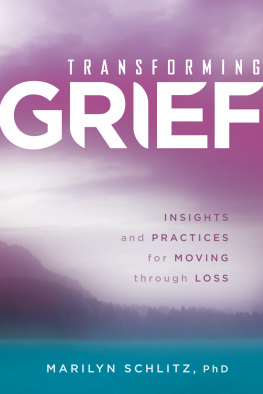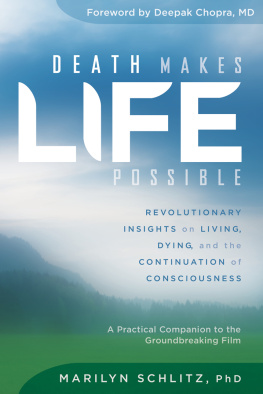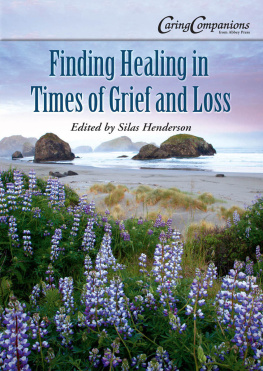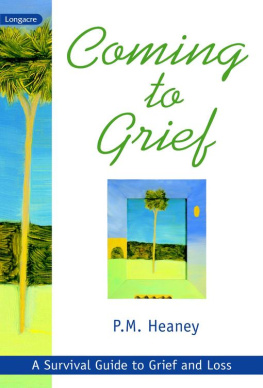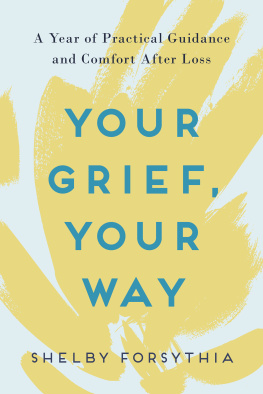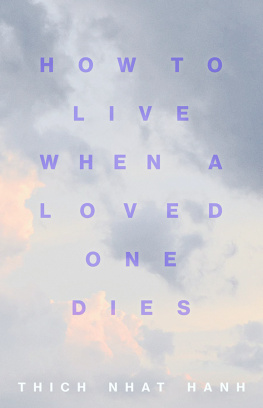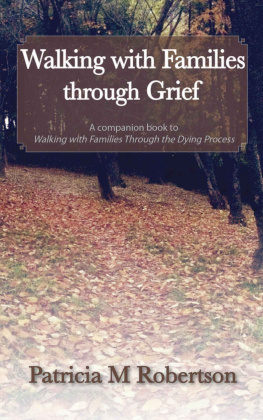Transforming Grief
Insights and Practices for Moving through Loss
Marilyn Schlitz, PhD
Excerpted from the book
Death Makes Life Possible: Revolutionary Insights on Living, Dying, and the Continuation of Consciousness
SOUNDS TRUE
Boulder, Colorado
Contents
Introduction
death noun \'deth\: the end of life: the time when someone or something dies. Christian Science: the lie of life in matter: that which is unreal and untrue.
life noun \'lf\: the ability to grow, change, etc., that separates plants and animals from things like water or rocks.
WHAT IS DEATH? What happens after we die? And how do our answers to these questions impact how we live our lives?
My encounter with these timeless questions began before I can even rememberand before I was able to formulate the queries. I was an inquisitive, precocious, eighteen-month-old toddler, wearing pink pajamas and exploring the world around me. In a careless moment, my father had left a can of lighter fluid on the yellow Formica kitchen table. I grabbed the can and put the opening in my mouth. For months after, my small body wrestled and rested in a hospital as my lungs sought the affirmation of breath, and I struggled in the gray zone between living and dying. After several rounds of intensive care, I survived. I feel sure that this experience planted within me the seeds of respect and appreciation for the art of healing. And knowing that Id survived such a harrowing experience as a young child gave me a curiosity about the semipermeable membrane between life and death.
I grew up in Detroit in the 1960s and 70s, a time when the United States was at war with itself. It was a war of race, of class, and ultimately of consciousness and worldview. Coming of age in such a complex time and in a setting that fueled my rebellion at individual and social levels, I was alive with confusion, anger, and a desire for change.
One night, when I was fifteen, I was on the back of a motorcycle with the wrong person at the wrong time and in the wrong place. A drunk driver pulled out of the parking lot of a bar, without his car lights on, and hit the motorcycle. The impact threw my body into the air. During what I now understand was an out-of-body experience, I watched my physical being tumble through the sky and crash to the ground. I clearly recall feeling my awareness transcend my body and look down on it from a higher vantage point.
I was taken to the emergency room with a deep, wide cut in my left leg. Waiting for my parents, who were hours away, I heard talk of possible amputation. The emergency medical team did their best, putting sixty-six stitches below my knee and eventually sending me home with question marks about my legs recovery.
Lying on the couch in my familys home during the following week, I somehow got the idea that I could and should visualize my immune system healing my leg. I lay there for long periods of time, feeling the tingles of healing. I didnt come from a medical family, and I have no memory of having heard about mind-body medicine before that time. Now I can see that I had a direct, intuitive understanding about what I needed to do to bring about my own healing.
Over the years, my worldview has expanded to accommodate a greater range of human possibility. Today, I have two well-positioned feet on the ground and an awareness that some aspects of myself are more than just physical. I have also been at the bedsides of family and friends who have crossed to the other side. This has helped deepen my own understanding of mortality. I have felt the pain of loss and the transformational potential of finding peace in grief.
DOORWAYS TO DIALOGUE
Pursuing answers to questions of consciousness and worldview has become the defining work of my life. For decades, I have researched the hidden dimensions of being human. I have conducted myriad experiments exploring the subtle reaches of mind and the existence of consciousness beyond the body. I have addressed fundamental questions about the healing potentials that lie within our ability to change and transform. I have questioned many thousands of people, including average folks, children, accomplished scientists, and acclaimed wisdom holders who represent many traditions and worldviews.
I have worked with teams of colleagues, including psychologists Cassandra Vieten and Tina Amorok, to develop a model explaining how our worldviews transform. That worldview transformation model draws on the nature of experiences that cross the distance between our physical and our metaphysical knowing and being. We published our preliminary findings in the 2008 book Living Deeply: The Art and Science of Transformation in Everyday Life. Left out of this earlier work was the role that death awareness plays in how we live and how we transform. In my own process of exploration, I have sought to understand the role of death in our personal growth, healing, and spiritual awakening.
THE COSTS OF NOT TALKING ABOUT DEATH
The topic of death is both timely and relevant to all of us. As the demographic facts reveal, were an aging population. There is an unprecedented increase in the average age of people throughout the world. In 2008, the number of people worldwide who were sixty-five and older was estimated at 506 million; it is calculated to hit 1.3 billion by the year 2040. The population of the United States is predicted to reach 400 million by 2050; approximately 20 percent of people
Cornell University social psychologist and boomer Daryl J. Bem told me, Given my own ageIm now in my seventiesI have shifted, the way that many older people do, from the thought of ones life up until this point, and instead, [to] the thought of ones life until death. And that shifts ones perspective in many, many ways. Like Bem, boomers are starting to think about their own death and what may lie beyond this life.
Americas boomers have long been characterized by their individualism. Today this vigorous autonomy is challenged as we are confronted with the care of aging parents and ill or disabled children or spouses, as well as with our own mortality. We are looking for innovative ways to redefine our changing identities, roles, and responsibilities. As we age and confront our own existential issues, many of us are seeking new sources of meaning and purpose. Many of us are pursuing a self-reflective quest for wholeness, exploring diverse practices and approaches that allow us to forge our own truth system, alone and in the company of others. Some are returning to their faiths of origin. Others are embarking on a new spiritual path that may help them to live more authentic lives. For boomers and beyond, there is an expectation that old age can be better, and so we are open to developing new skills and new ways of aging gracefully.
Despite how relevant the topic of death is for everyone, many of us do not like to think or talk about it. If we are healthy, we may be less likely to prepare for its inevitability. If a member of our family is terminally ill, we may be reluctant to bring up the subject because it means acknowledging the truth of the situation or offending our loved ones. Many of us hesitate to talk about death due to our own fear or our cultures taboo about discussing death. But by not talking about this potentially charged topic, we miss the opportunity to share with our family and friends about our wishes and hopes. We give up our autonomy, decision-making power, and personal authority. In this process, we all deserve better.
Unfortunately, our reluctance to contemplate death is creating significant problems. According to a recent survey by the California Healthcare Foundation, six out of ten people say they dont want their family burdened by end-of-life decisions.
In America, one out of every four Medicare dollars is allocated to those who are in their last year of life. Out-of-pocket expenses exceed the families financial assets in 40 percent of households, according to a Mount Sinai School of Medicine survey. Valiant efforts are made to delay what is often inevitable. For many families confronted by a medical crisis, heroic measures are a price worth paying in order to reduce the suffering of our loved ones. Unfortunately, our loved ones may not suffer less. In some cases, treatments may lead to greater harm and suffering, and the best possible care may be no treatment at all. In the light of these challenges, more and more people are seeking to help their dying loved ones end their lives through dignified, peaceful, and compassionate means.
Next page
